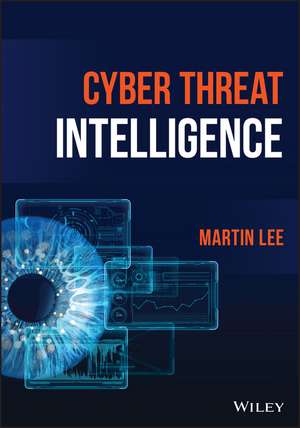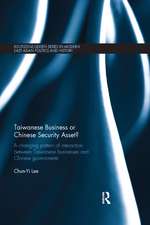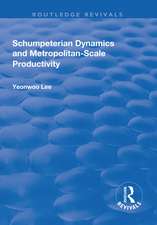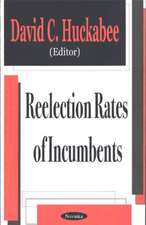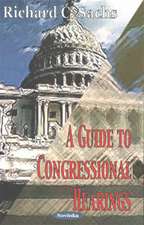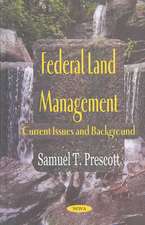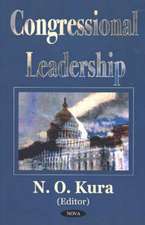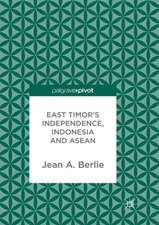Cyber Threat Intelligence
Autor Leeen Limba Engleză Hardback – 16 apr 2023
Preț: 531.89 lei
Preț vechi: 699.86 lei
-24% Nou
Puncte Express: 798
Preț estimativ în valută:
101.79€ • 110.53$ • 85.50£
101.79€ • 110.53$ • 85.50£
Carte disponibilă
Livrare economică 01-15 aprilie
Livrare express 15-21 martie pentru 33.20 lei
Preluare comenzi: 021 569.72.76
Specificații
ISBN-13: 9781119861744
ISBN-10: 1119861748
Pagini: 304
Dimensiuni: 152 x 229 x 20 mm
Greutate: 0.58 kg
Editura: Wiley
Locul publicării:Hoboken, United States
ISBN-10: 1119861748
Pagini: 304
Dimensiuni: 152 x 229 x 20 mm
Greutate: 0.58 kg
Editura: Wiley
Locul publicării:Hoboken, United States
Notă biografică
Martin Lee is Technical Lead of Security Research within Talos, Cisco's threat intelligence and research organization. Martin started his career researching the genetics of human viruses, but soon switched paths to follow a career in IT. With over 20 years of experience within the cyber security industry, he is CISSP certified, a Chartered Engineer, and holds degrees from the Universities of Bristol, Cambridge, Paris-Sud and Oxford.
Cuprins
Preface xi About the Author xiii Abbreviations xv Endorsements for Martin Lee's Book xix 1 Introduction 1 1.1 Definitions 1 1.1.1 Intelligence 2 1.1.2 Cyber Threat 3 1.1.3 Cyber Threat Intelligence 4 1.2 History of Threat Intelligence 5 1.2.1 Antiquity 5 1.2.2 Ancient Rome 7 1.2.3 Medieval and Renaissance Age 8 1.2.4 Industrial Age 10 1.2.5 World War I 11 1.2.6 World War II 13 1.2.7 Post War Intelligence 14 1.2.8 Cyber Threat Intelligence 15 1.2.9 Emergence of Private Sector Intelligence Sharing 19 1.3 Utility of Threat Intelligence 21 1.3.1 Developing Cyber Threat Intelligence 23 Summary 24 References 24 2 Threat Environment 31 2.1 Threat 31 2.1.1 Threat Classification 33 2.2 Risk and Vulnerability 35 2.2.1 Human Vulnerabilities 38 2.2.1.1 Example - Business Email Compromise 39 2.2.2 Configuration Vulnerabilities 39 2.2.2.1 Example - Misconfiguration of Cloud Storage 40 2.2.3 Software Vulnerabilities 41 2.2.3.1 Example - Log4j Vulnerabilities 43 2.3 Threat Actors 43 2.3.1 Example - Operation Payback 46 2.3.2 Example - Stuxnet 47 2.3.3 Tracking Threat Actors 47 2.4 TTPs - Tactics, Techniques, and Procedures 49 2.5 Victimology 53 2.5.1 Diamond Model 55 2.6 Threat Landscape 56 2.6.1 Example - Ransomware 57 2.7 Attack Vectors, Vulnerabilities, and Exploits 58 2.7.1 Email Attack Vectors 59 2.7.2 Web-Based Attacks 60 2.7.3 Network Service Attacks 61 2.7.4 Supply Chain Attacks 61 2.8 The Kill Chain 62 2.9 Untargeted versus Targeted Attacks 64 2.10 Persistence 65 2.11 Thinking Like a Threat Actor 66 Summary 66 References 67 3 Applying Intelligence 75 3.1 Planning Intelligence Gathering 75 3.1.1 The Intelligence Programme 77 3.1.2 Principles of Intelligence 78 3.1.3 Intelligence Metrics 81 3.2 The Intelligence Cycle 82 3.2.1 Planning, Requirements, and Direction 83 3.2.2 Collection 84 3.2.3 Analysis and Processing 84 3.2.4 Production 85 3.2.5 Dissemination 85 3.2.6 Review 85 3.3 Situational Awareness 86 3.3.1 Example - 2013 Target Breach 88 3.4 Goal Oriented Security and Threat Modelling 89 3.5 Strategic, Operational, and Tactical Intelligence 91 3.5.1 Strategic Intelligence 91 3.5.1.1 Example - Lazarus Group 92 3.5.2 Operational Intelligence 93 3.5.2.1 Example - SamSam 93 3.5.3 Tactical Intelligence 94 3.5.3.1 Example - WannaCry 94 3.5.4 Sources of Intelligence Reports 94 3.5.4.1 Example - Shamoon 95 3.6 Incident Preparedness and Response 96 3.6.1 Preparation and Practice 99 Summary 100 References 100 4 Collecting Intelligence 105 4.1 Hierarchy of Evidence 105 4.1.1 Example - Smoking Tobacco Risk 107 4.2 Understanding Intelligence 108 4.2.1 Expressing Credibility 109 4.2.2 Expressing Confidence 110 4.2.3 Understanding Errors 114 4.2.3.1 Example - the WannaCry Email 114 4.2.3.2 Example - the Olympic Destroyer False Flags 114 4.3 Third Party Intelligence Reports 115 4.3.1 Tactical and Operational Reports 116 4.3.1.1 Example - Heartbleed 117 4.3.2 Strategic Threat Reports 118 4.4 Internal Incident Reports 118 4.5 Root Cause Analysis 119 4.6 Active Intelligence Gathering 120 4.6.1 Example - the Nightingale Floor 122 4.6.2 Example - the Macron Leaks 122 Summary 123 References 123 5 Generating Intelligence 127 5.1 The Intelligence Cycle in Practice 128 5.1.1 See it, Sense it, Share it, Use it 128 5.1.2 F3EAD Cycle 129 5.1.3 D3A Process 131 5.1.4 Applying the Intelligence Cycle 132 5.1.4.1 Planning and Requirements 132 5.1.4.2 Collection, Analysis, and Processing 133 5.1.4.3 Production and Dissemination 134 5.1.4.4 Feedback and Improvement 135 5.1.4.5 The Intelligence Cycle in Reverse 135 5.2 Sources of Data 136 5.3 Searching Data 137 5.4 Threat Hunting 138 5.4.1 Models of Threat Hunting 139 5.4.2 Analysing Data 140 5.4.3 Entity Behaviour Analytics 143 5.5 Transforming Data into Intelligence 144 5.5.1 Structured Geospatial Analytical Method 144 5.5.2 Analysis of Competing Hypotheses 146 5.5.3 Poor Practices 146 5.6 Sharing Intelligence 147 5.6.1 Machine Readable Intelligence 150 5.7 Measuring the Effectiveness of Generated Intelligence 151 Summary 152 References 152 6 Attribution 155 6.1 Holding Perpetrators to Account 155 6.1.1 Punishment 156 6.1.2 Legal Frameworks 156 6.1.3 Cyber Crime Legislation 157 6.1.4 International Law 158 6.1.5 Crime and Punishment 158 6.2 Standards of Proof 158 6.2.1 Forensic Evidence 159 6.3 Mechanisms of Attribution 160 6.3.1 Attack Attributes 161 6.3.1.1 Attacker TTPs 161 6.3.1.2 Example - HAFNIUM 162 6.3.1.3 Attacker Infrastructure 162 6.3.1.4 Victimology 163 6.3.1.5 Malicious Code 163 6.3.2 Asserting Attribution 165 6.4 Anti- Attribution Techniques 166 6.4.1 Infrastructure 166 6.4.2 Malicious Tools 166 6.4.3 False Attribution 167 6.4.4 Chains of Attribution 167 6.5 Third Party Attribution 167 6.6 Using Attribution 168 Summary 170 References 171 7 Professionalism 175 7.1 Notions of Professionalism 176 7.1.1 Professional Ethics 177 7.2 Developing a New Profession 178 7.2.1 Professional Education 178 7.2.2 Professional Behaviour and Ethics 179 7.2.2.1 Professionalism in Medicine 179 7.2.2.2 Professionalism in Accountancy 181 7.2.2.3 Professionalism in Engineering 183 7.2.3 Certifications and Codes of Ethics 186 7.3 Behaving Ethically 188 7.3.1 The Five Philosophical Approaches 188 7.3.2 The Josephson Model 189 7.3.3 PMI Ethical Decision Making Framework 190 7.4 Legal and Ethical Environment 191 7.4.1 Planning 192 7.4.1.1 Responsible Vulnerability Disclosure 193 7.4.1.2 Vulnerability Hoarding 194 7.4.2 Collection, Analysis, and Processing 194 7.4.2.1 PRISM Programme 195 7.4.2.2 Open and Closed Doors 196 7.4.3 Dissemination 196 7.4.3.1 Doxxing 197 7.5 Managing the Unexpected 198 7.6 Continuous Improvement 199 Summary 199 References 200 8 Future Threats and Conclusion 207 8.1 Emerging Technologies 207 8.1.1 Smart Buildings 208 8.1.1.1 Software Errors 209 8.1.1.2 Example - Maroochy Shire Incident 210 8.1.2 Health Care 211 8.1.2.1 Example - Conti Attack Against Irish Health Sector 212 8.1.3 Transport Systems 213 8.2 Emerging Attacks 214 8.2.1 Threat Actor Evolutions 214 8.2.1.1 Criminal Threat Actors 214 8.2.1.2 Nation State Threat Actors 216 8.2.1.3 Other Threat Actors 220 8.3 Emerging Workforce 221 8.3.1 Job Roles and Skills 221 8.3.2 Diversity in Hiring 225 8.3.3 Growing the Profession 227 8.4 Conclusion 228 References 229 9 Case Studies 237 9.1 Target Compromise 2013 238 9.1.1 Background 238 9.1.2 The Attack 241 9.2 WannaCry 2017 243 9.2.1 Background 244 9.2.1.1 Guardians of Peace 244 9.2.1.2 The Shadow Brokers 245 9.2.1.3 Threat Landscape - Worms and Ransomware 247 9.2.2 The Attack 247 9.2.2.1 Prelude 247 9.2.2.2 Malware 249 9.3 NotPetya 2017 251 9.3.1 Background 251 9.3.2 The Attack 252 9.3.2.1 Distribution 253 9.3.2.2 Payload 253 9.3.2.3 Spread and Consequences 254 9.4 VPNFilter 2018 255 9.4.1 Background 255 9.4.2 The Attack 256 9.5 SUNBURST and SUNSPOT 2020 257 9.5.1 Background 258 9.5.2 The Attack 259 9.6 Macron Leaks 2017 260 9.6.1 Background 260 9.6.2 The Attack 261 References 262 Index 277
